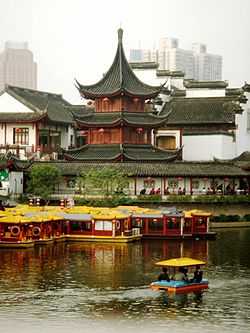Nanjing Fuzimiao
| Nanjing Fuzimiao | |
|---|---|
|
Native name Chinese: 南京夫子廟 | |
|
Confucius Temple in Nanjing Quebec Court of light, also known as Kuixing Court, Man Star Court. | |
| Location | 128 Zinyhan Road, Nanjing, China |
| Coordinates | 32°1′13.72″N 118°47′20.52″E / 32.0204778°N 118.7890333°ECoordinates: 32°1′13.72″N 118°47′20.52″E / 32.0204778°N 118.7890333°E |
| Built | 1034 originally A.D.; the current structure was built in the 19th century |
Nanjing Fuzimiao (Chinese: 南京夫子廟) or Fuzimiao (Chinese: 夫子廟; literally: "Confucian Temple"), is located in southern Nanjing City on banks of the Qinhuai River. Within the area are cultural attractions, arts, shopping, and entertainment.
History
Emperor Wu of Liang built at this location a palace with a Buddhist temple which was given to Taoist practitioners during the reign of the Hongwu Emperor. After Zeng Guofan had massacered the Taiping rebels he ordered the construction of the present Confucian temple. The current buildings date from the 19th century, with additions made since then. The temple lost all financia support by the state as a result oft the revolution of 1911. During the late 1920s to 1931 and again in 1932 it was used as army barracks for troops the KMT regime and left in a dilapidated state. Some halls were used as picture gallery.[1]
Throughout its history, the temple has been a place for study of Confucianism. There is a small exhibit of folkart within the temple.[2]
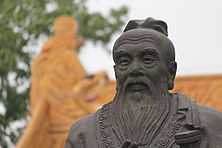 | 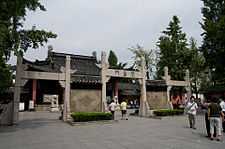 |
 | |
Clockwise from top left:
| |
-
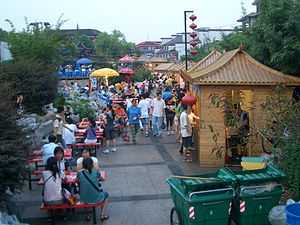
Streetview north of Zhonghua Gate
-
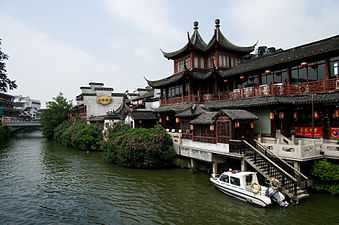
Riverside near Fuzi Miao
-
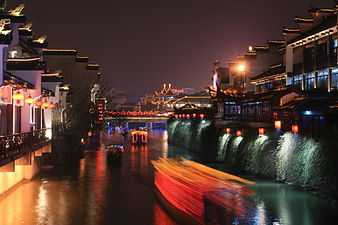
Night view of Qinhuai River and Fuzimiao
References
- ↑ Krug, Hans Joachim (*1893); Wanderungen und Wandlungen in China; Berlin 1941 (Scherl), p. 44-5, 53 (based on a visits 1930-3)
- ↑ DK Eyewitness Travel Guide: China. DK Publishing; 1 June 2012. ISBN 978-0-7566-9328-2. p. 222.
| Wikimedia Commons has media related to Fuzi Miao. |
